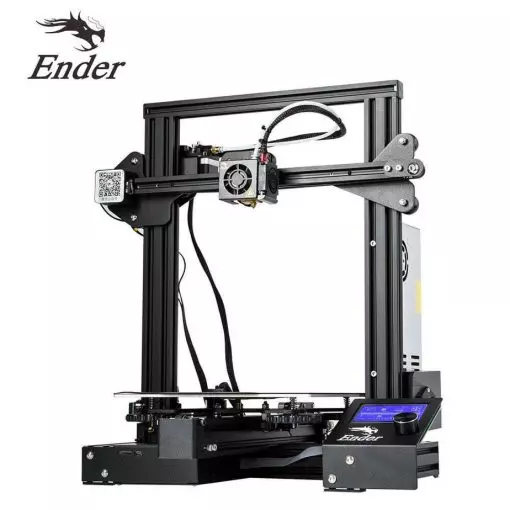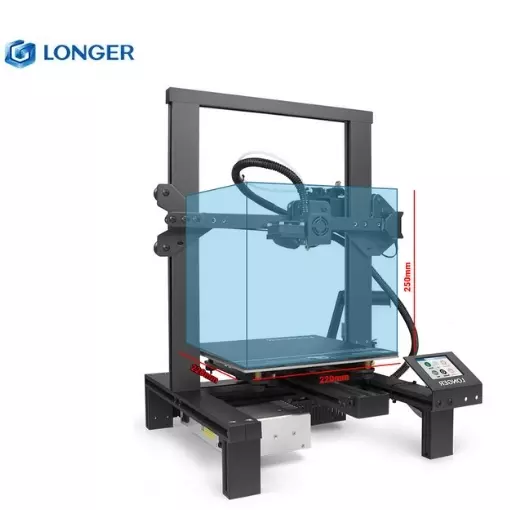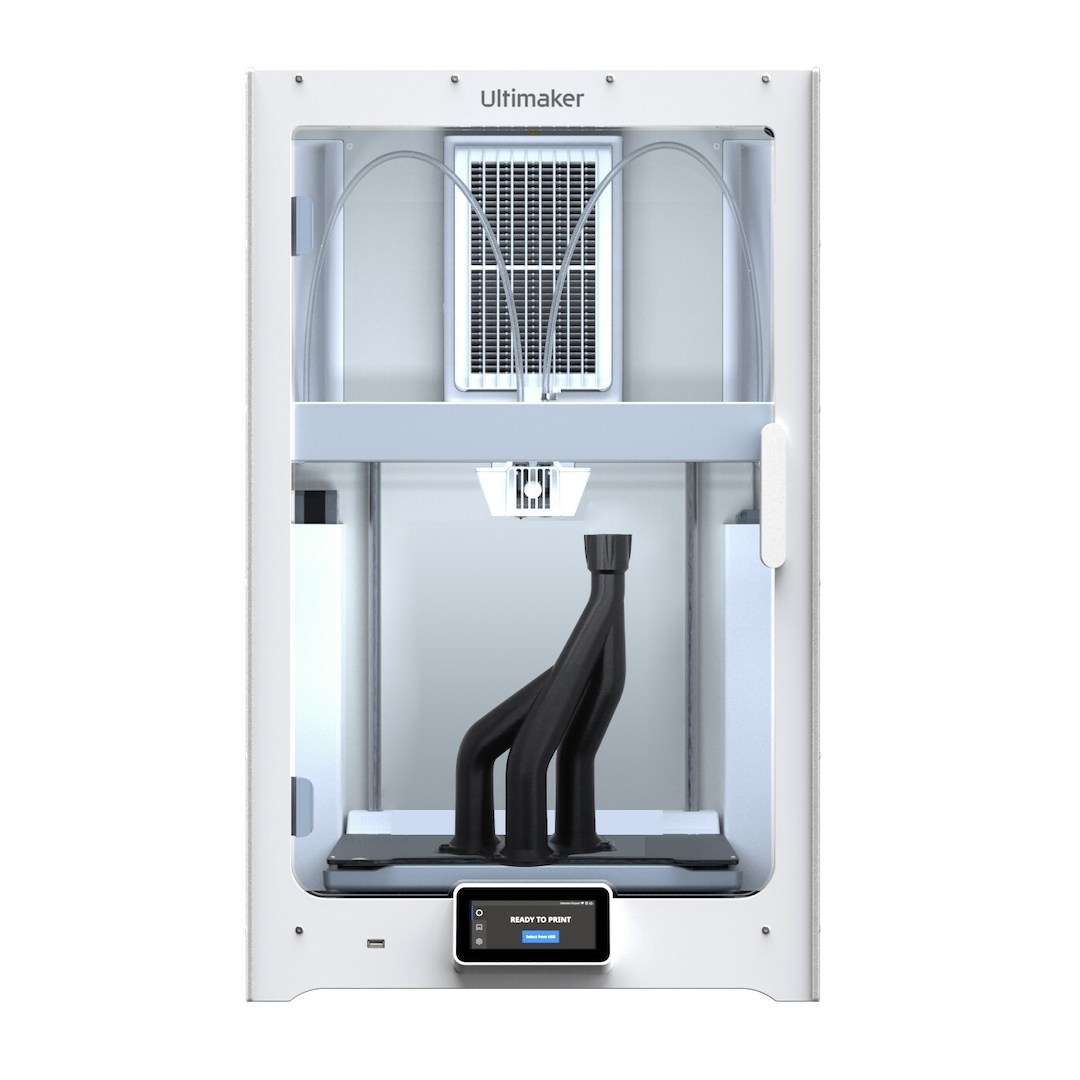Compare Ender 3 vs LK4 vs S7
Comparison between the best 3D printers
Choose the best 3D printer at the best price. The cheapest 3D printers are here.
Buy a 3D printer here with 3D Fila.
 |
 |
 |
|
| Model | Ender 3[BUY Ender 3] |
LK4 |
S7 |
| Printing Material | Filament | Filament | Filament |
| Estimated price | $210,00 | $200,00 | $8300,00 |
| Fabricante | Creality 3D | Longer 3D | Ultimaker |
| Release Year | 2018 | 2019 | 2022 |
| Print Volume [mm] | 220x220x250 | 220x220x250 | 240x330x300 |
| Printer Size [mm] | 440x440x465 | 402x425x505 | 585x495x800 |
| Weight [kg] | 6,62 | 7,8 | 29 |
| Power Loss Recovery | NO | YES | YES |
| Enclosed printer | NO | NO | NO |
| Bed Leveling | Manual | Manual com Assistência | Automatic |
| Filament End Sensor | NO | YES | YES |
| Bed type | Heated | Heated | Heated |
| Power supply system | Bowden | Bowden | Bowden |
| Standard nozzle | 0,4 | 0,4 | 0,4 |
| Maximum Nozzle Temperature [°C] | 255 | 250 | 280 |
| Maximum Bed Temperature [°C] | 110 | 100 | 120 |
| Maximum printing speed [mm/s] | 180 | 120 | 180 |
| Filament holder | YES | YES | YES |
| Camera for supervision | NO | NO | YES |
| Recommended filaments | PLA, TPU, ABS, PETG | PLA, TPU, ABS, PETG | PLA, ABS, PETG, PC, Nylon, Tritan, PP |
| Recommended slicers | Cura, Simplify, Slic3r | Cura, Simplify, Slic3r | Cura |
| Maximum Resolution [mm] | 0,1 | 0,1 | 0,1 |
| Processor | 8 bits | 8 bits | |
| Display | Mono | Touchscreen TFT 2,8'' | Display touchscreen 4,7'' |
| Power Supply | 24V / 270W | 12V / 360W | 500 W |
| Connectivity | SD / USB | SD / USB | USB / Wi-Fi |
| Operating systems | Windows, Mac, Linux | Windows, Mac, Linux | Windows, Mac, Linux |
| Date of registration in the system | 2021-04-13 | 2021-04-15 | 2023-01-28 |
| Release date | 2018 | 2019 | 2022 |
| Extra features | The Ender 3 V1 is a DIY assembly 3D printer, a sales leader since 2017, standing out for its cost-benefit. With a wide printing capacity, it has a CNC machined structure for precision and stability. It offers high-precision prints with low noise, thanks to its innovative V-profile and pulleys. It has a self-adhesive magnetic platform for easy removal of models and excellent adhesion. The Ender 3 heats up quickly, reaching 100°C in 5 minutes, ideal for agile prints. It includes protection against power failures, allowing you to resume printing after interruptions, saving time and material. | The Longer LK4 is a versatile 3D printer capable of working with a wide range of filaments, such as PLA, ABS, TPU, copper, wood and carbon fiber, thanks to its 0.4mm nozzle and heated bed up to 110°C. With a printing accuracy of between 0.05-0.4mm, it stands out for its solid construction with an aluminum frame, weighing around 7kg, and a robust 24V and 15A power supply. The kit includes an Allen key, a 7/10 key, a microSD card with USB adapter, a spatula, cable ties, a power cable, 5m of filament and a spare filament end sensor. Assembly is simplified, with around 90% of the equipment pre-assembled, and detailed instructions assist in the process. Special features include print recovery after power failure, a filament end sensor, a super-adhesive printing surface and an intuitive color touchscreen display. The design features smooth profiles for easy assembly, and the position of the filament holder optimizes the filament path to the extruder. The LK4 is a solid choice for 3D printing enthusiasts looking for quality and versatility. | The UltiMaker S7 printer features a series of technological innovations to enhance 3D printing. It incorporates a flexible, magnetic build plate with PEI coating, promoting better adhesion and easier part removal. Its new inductive sensor significantly improves bed leveling, ensuring perpendicular and accurate prints. In addition, the S7 has a higher quality camera for remote monitoring, an integrated air filter, and uses a unique glass door to maintain a constant temperature in the print chamber. The machine is also compatible with the expansion kit for metal printing. |
| Support for multiple colors and materials (AMS and CFS) | NO | NO | NO |
Notes * |
|||
| Cost-benefit | 6 / 10 | 7 / 10 | 1 / 10 |
| Hardware | 0.5 / 10 | 2 / 10 | 3.6 / 10 |
| Screen | . | . | . |
| Print volume | 3 / 10 | 3 / 10 | 4 / 10 |
| Performance | 1 / 10 | 1 / 10 | 1 / 10 |
| [BUY Ender 3] |
Conclusion |
| In comparing the three 3D printers—Ender 3, LK4, and S7—it's clear that each model caters to different user needs and budgets. 1. **Ender 3**: Positioned as an excellent entry-level printer, the Ender 3 is known for its affordability combined with reliable performance. Although it features a manual bed leveling system and lacks advanced features like power loss recovery, its DIY assembly appeals to hobbyists who enjoy tinkering and customizing their setups. Its compact size and lighter weight make it a practical choice for home users. 2. **LK4**: Slightly more expensive than the Ender 3, the LK4 enhances usability with its semi-automatic bed leveling and filament end sensor, which are valuable for reducing print failures. Its solid aluminum frame and broad compatibility with various filaments make it a versatile option for enthusiasts seeking reliable performance without breaking the bank. Though it lacks some premium features, it strikes a good balance of cost and functionality for its class. 3. **S7**: On the opposite end of the spectrum, the S7 is priced significantly higher, targeting professional users who require advanced capabilities. With automatic bed leveling, a built-in camera for remote monitoring, and the ability to print with a wider range of materials, the S7 is tailored for serious projects that demand precision and efficiency. Its features justify the premium price, though the cost may deter casual users looking for a budget-friendly option. **Conclusion**: For hobbyists or beginners, the Ender 3 offers great value and dependable performance. The LK4 is ideal for those who want a step up in convenience and functionality without a major investment. In contrast, the S7 is intended for professional or high-demand users who are willing to invest significantly for advanced features and capabilities. Ultimately, the choice comes down to individual needs: budget constraints, desired features, and intended usage scope. |

